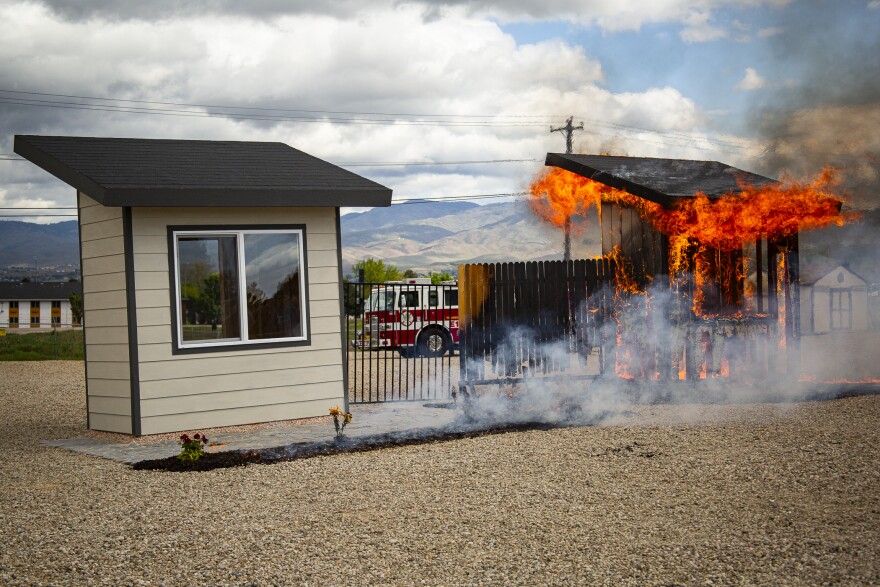Earlier this year, Idaho officials asked homeowners insurance providers in the state for data on their operations, including information on premiums and policy cancellations. Newly released findings paint a troubling picture for the Gem State, and a top official says other Western states should undertake similar efforts.
Some of those findings from the mandatory data request are eye-popping: Between 2022 and 2023, for example, the number of homeowners insurance policies plummeted by more than 40,000 – or roughly 9% of the entire market. Total policies increased modestly in 2024, according to a report provided to the Mountain West News Bureau.
“It is very, very rare to see that significant of a drop. It shows, really, unhealthiness in the marketplace” said Dean Cameron, director of the Idaho Department of Insurance. “It would constitute a significant change in the marketplace.”
He said that some of those policyholders may have found some coverage through less regulated so-called surplus line policies, which can exclude wildfire protection among other serious limitations. But Cameron said that “our fear is that we've got 30,000 plus people that decided to go without coverage.”
An important part of the drop in policies, Cameron explained, was due to three carriers starting to wind down their homeowners operations in the state. But the “bulk of the 2023 loss,” he added, “is simply carriers tightening their where they want to underwrite, where they want to sell and and deciding who they're not renewing.”
The Mountain West News Bureau has previously investigated declining insurance availability and affordability in Idaho and across the West. The department report points to construction inflation, high real estate demand and increasing wildfire frequency as key factors behind what it describes as a hardening of the Idaho property insurance market.
“This means insurance companies have experienced increased losses and rising costs because of those losses,” the report reads. “In response, insurers have implemented stricter underwriting requirements, raised rates, and restricted coverage in order to remain profitable and maintain financial solvency. Many companies have significantly increased premiums in certain areas of the state, restricted the geographic regions where they offer coverage, non-renewed policies in high-risk zones, and in some cases, exited the property insurance market altogether.”
Statewide between 2022 and 2024, the department found a nearly 40% increase in average annual homeowners premiums, which now sit at roughly $1,800. But some parts of the state - including some far from those most commonly associated with wildfire risk - saw explosive growth.
In the 83606 ZIP Code in Caldwell, a fast-growing Treasure Valley agricultural community, they more than doubled to $2,751 in just two years.
“With this data we're able to show that this isn't just a wildland interface problem,” Cameron said. “This is everybody's problem, and it's a dramatic problem that's impacting the entire state.”
He hopes the new data will spur state legislators to respond to the problem during next year’s legislative session. As it did last year, Cameron’s office will again back a bill seeking to establish a wildfire risk mitigation fund to support resilience efforts undertaken by homeowners and communities.
To be effective, he argued, mitigation needs to be carried out at a neighborhood or community scale.
“You're only as safe as your neighbor is safe,” he said.
Since the last session, when several insurance measures failed to advance, Cameron said his office has “had lots of legislators contact us and say, ‘I realize now, this is a bigger deal. I've got constituents calling me and they're being non-renewed. And so what can we do?’”
The insurance director said his office is likely to ask for 2025 data from insurers next year, and he “absolutely” encouraged his counterparts across the West to carry out similar requests. There’s also the possibility, he added, of the National Association of Insurance Commissioners conducting a national data call.
This story was produced by the Mountain West News Bureau, a collaboration between Boise State Public Radio, Wyoming Public Media, Nevada Public Radio, KUNR in Nevada, KUNC in Northern Colorado, KANW in New Mexico, Colorado Public Radio and KJZZ in Arizona as well as NPR, with support from affiliate newsrooms across the region. Funding for the Mountain West News Bureau is provided in part by the Corporation for Public Broadcasting and Eric and Wendy Schmidt.





